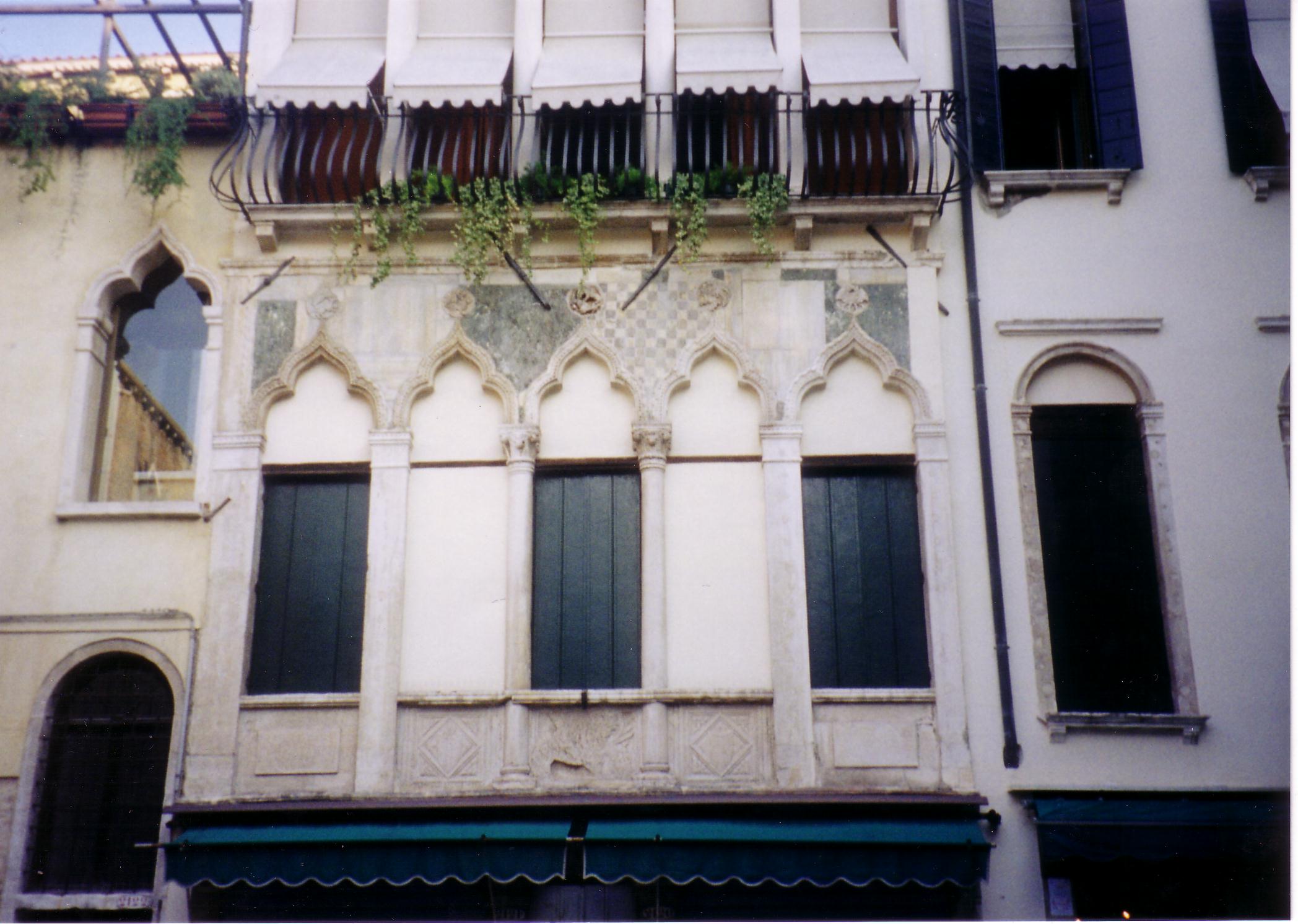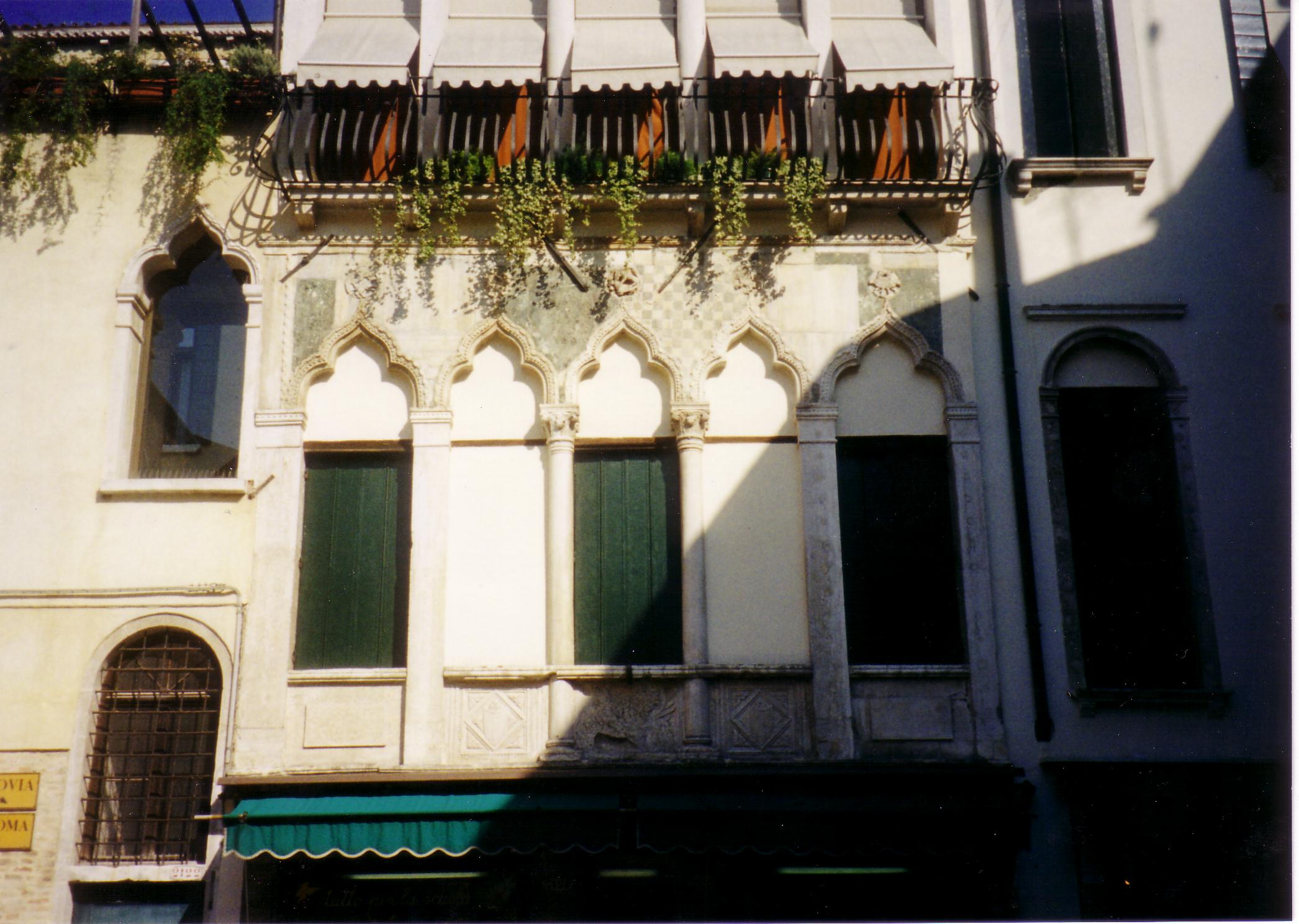 |
This is probably the Palazzetto Viaro Zane (S. Croce 2123, Nadali & Vianello (1999) Tav. 16) with the chessboard design in its spandrils, also at Campo Santa Maria Mater Domini. There is some confusion in the references to what Ruskin calls the ‘Chess House’. At Works, 11.281 it is a house with fourth order windows and a chess board pattern in its spandrils, and that is the house illustrated in the plate at Works, 11.320, the Palazzetto Viaro Zane. Ruskin, or perhaps Cook and Wedderburn, then refer to Plate 11 at Works, 11.341 ‘Examples’ as the Chess House. That is clearly the Palazzetto Foscolo Corner, with a squared pattern and shield in the tympanum of the doorway, and located on the Campo Santa Margherita, at Dorsoduro 2931. It is most likely that the house referred to at House Book 2 p.26 is the Palazzetto Viaro Zane in Campo Santa Mater Domini. It is this which Rusikin has in mind as the ‘Chess House’ because it follows directly in the notebook from page 25 which is also concerned with a building in the same campo.
Works, 11.320 ‘Plate 2 Arabian Windows In Campo Santa Maria Mater-Domini. This group of window is the only remnant of a small palace, modernised in all its other parts: but it is one of the richest fragments of the city: and a beautiful example of the fantastic arches which I believe to have been borrowed from the Arabs’
Works, 38.300 [n/a] (Catalogue of Drawings) ‘Arabian Windows in Campo S. Maria Mater-Domini; wash (12 x 17), Engraved by Lupton’.
See Constantini & Zannier (1986) p.15 where this page is reproduced.
 |
 |
 |
 |
 |
 |
[Version 0.05: May 2008]